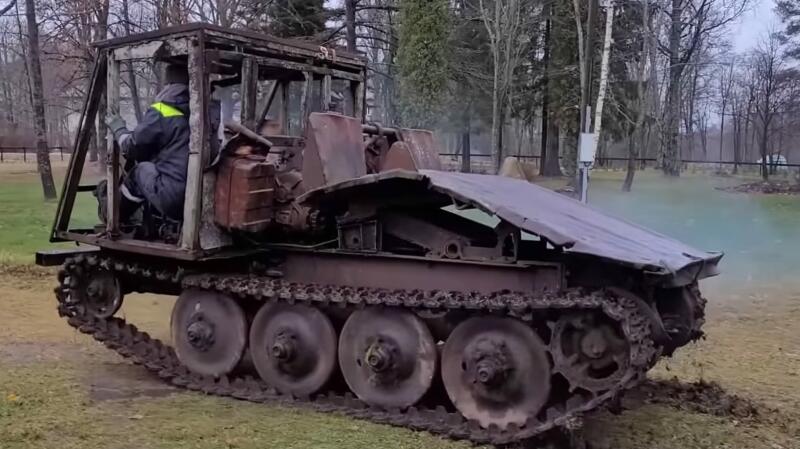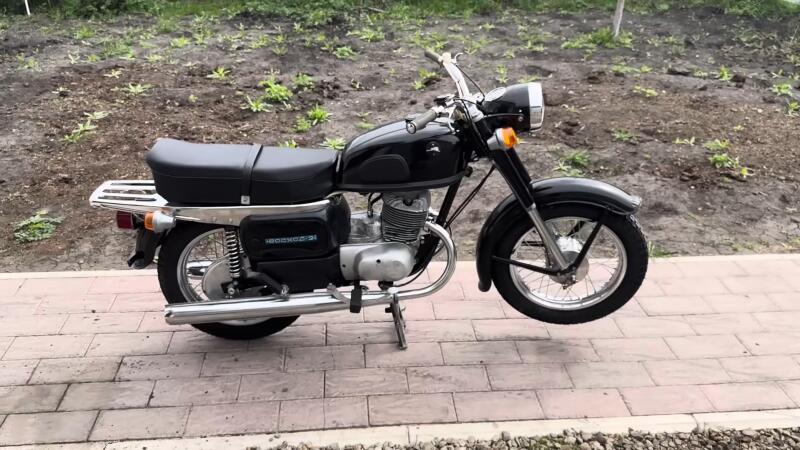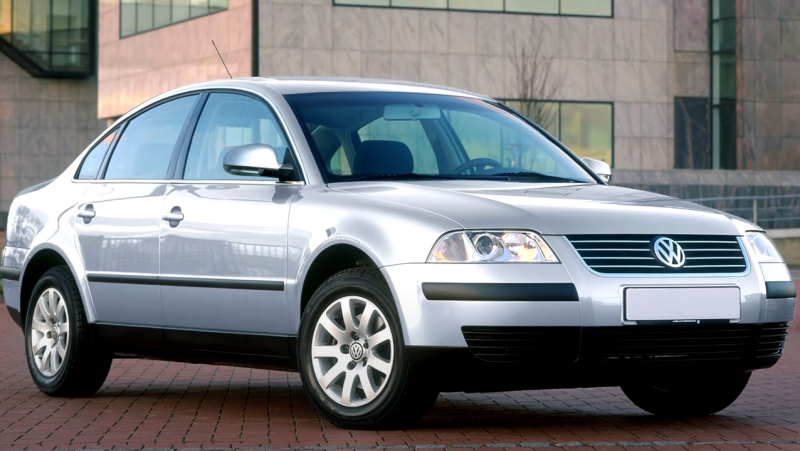After passing the tests (the new aircraft took to the skies in 1966) and fine-tuning, it was decided to demonstrate the successes of Soviet aviation in the West. The Yak-40 flew from Rome to the "Green Continent" without problems and failures in the operation of systems. The Italian and Australian press enthusiastically commented on the new product, claiming that the liner is “original in terms of characteristics, dimensions” and today it “has no equal”: there are only a few American projects of such a device that are being implemented only over the “next years”.
 There were no restaurants and pools in the Soviet Yak-40, but the latest press is always welcome. Photo: YouTube.com
There were no restaurants and pools in the Soviet Yak-40, but the latest press is always welcome. Photo: YouTube.comSoviet pilots sometimes called the liner "cigarette butt" among themselves for the "cropped" shape.
Almost immediately, orders for the purchase of a new aircraft from abroad went. In the next 14 years alone, more than 1000 pieces of equipment rolled off the assembly line.
Yak-42: "leapfrog" with wings
The success of the Yak-40 inspired Yakovlev, and the design bureau under his leadership began to develop the next model, a medium-range one, which was supposed to replace the Tu-134.
 The first version of the Yak-42 with a straight wing. Photo: YouTube.com
The first version of the Yak-42 with a straight wing. Photo: YouTube.comInitially, given the success of its predecessor, they were going to build a straight-wing liner. This design improves lift, and this reduces fuel consumption. Therefore, in 1974, a project with a straight wing was presented, which was approved by the Central Committee of the CPSU (Brezhnev personally liked the aircraft). By the end of the year, the first instance of the liner was rolled out of the gates of the plant. In 1975, the plane took off. During the tests, it turned out that a cruising speed of 680 km / h is clearly insufficient. An order was received from the MGA to increase it to 700-800 km / h. As a result, we decided to build a car with a wing at an angle of 30 °.
 The Yak-42 went into the series with a swept wing. Photo: YouTube.com
The Yak-42 went into the series with a swept wing. Photo: YouTube.comThe project was implemented quickly: in the same year, the upgraded liner began to be tested. Specifications:
✅ wingspan - 34,88 m
✅ length - 36,38 m
✅ empty weight (maximum) - 33,5 t (57,5 t)
✅ average speed - 700 km / h
✅ range - up to 4 thousand km for the Yak-42D
✅ highest height - 10,1 km
✅ passenger capacity - up to 120 people in the economy version
The aircraft turned out to be successful: it had a good power supply, was distinguished by a convenient arrangement of instruments and control knobs (taking into account the shortcomings identified on the Yak-40). Unlike the heavy Il-86, which was then put into operation, the relatively light Yak-42 did not need new taxiways. The latter circumstance contributed to the rapid expansion of the geography of flights. Many routes were mastered, including foreign ones: the Yak-42 flew to Berlin, Prague, Helsinki. For 1,5 years, 1,5 million passengers were transported.
Incidents
However, things did not go as smoothly as we would like. In 1982, a catastrophe occurred in Narovlya with the death of people. At the liner, at an altitude of 9 thousand meters, the stabilizer came off (premature wear of the thread of its drive is a design error). The operation of the Yak-42 was stopped, an investigation began, which lasted almost two years. The problem has been fixed.
 While the investigation was going on, the liner was laid up. Photo: YouTube.com
While the investigation was going on, the liner was laid up. Photo: YouTube.comIt is worth saying: incidents happened later, but they were all related to the “human factor” and the plane turned out to be nothing to do with it. Another incident became resonant: a plane crash in 2011, when the Lokomotiv hockey team died near Yaroslavl. It is possible that these disasters influenced the future fate of the liner.
 The last flight of hockey players. Photo: YouTube.com
The last flight of hockey players. Photo: YouTube.comThere were also curious cases associated with the operation. For example, the Yak-42, which had reached the echelon, suddenly lost all engines. The crew managed to turn the car around, which began to glide from 7 meters. At XNUMX meters, one engine was launched, and at two, a couple more. It turned out that the flight mechanic did not turn on the suction pumps, and the crew did not read the verification card. As a result, the engines were powered by fuel flowing by gravity, which stopped when the pressure decreased at altitude.
Another case is associated with the operation of a fire sensor on board the aircraft, which was reported to the dispatcher who gave the command to land. The crew worked so clearly and quickly that ... forgot to release the landing gear. The plane on the "belly" crawled along the runway, but everything ended well. Later it turned out that the sensor worked erroneously.
Design features of the aircraft
In the Yakovlev Design Bureau, close attention was paid to the mass of the aircraft and the strength of its design. To achieve both, the wing began to be made integral. For comparison: for the Tu-134 it consists of five parts, for the Tu-154 - three.
 We tried to make the aircraft control as ergonomic as possible. Photo: YouTube.com
We tried to make the aircraft control as ergonomic as possible. Photo: YouTube.comThe Yak-42 was in demand with foreign airlines, so there were export versions of the models. In them, for the first time in domestic practice, a cabin for two pilots was proposed. Experiments were carried out on the most rational layout of instrument panels.
 The number of crew members could be reduced to 2 people. Photo: YouTube.com
The number of crew members could be reduced to 2 people. Photo: YouTube.comAs a result, we got the best option in terms of ergonomics, which made it possible to refuse the "services" of the navigator and flight mechanic.
D-36 engine
It is worth mentioning separately. The unit was highly reliable - some of them are still used today. The second advantage is low fuel consumption of 3100 kg / h when flying at cruising speed. The plane was much more economical than its "classmates". But not only this was good for the D-36: the engine had a very low noise level and met all international standards in terms of sound level. This was achieved through the use of multilayer fiberglass inserts in the manufacture of engine nacelles. The only negative of the D-36 is the lack of a reverse: it was possible to slow down only with wheels and a spoiler.
 Disembarkation of Yak-42 passengers. Photo: YouTube.com
Disembarkation of Yak-42 passengers. Photo: YouTube.comAnd the Yak-42 was distinguished by such a “trifle” as its own gangway. This “accessory” was not provided for at third-class airfields, which allowed the aircraft to land where the Tu-134 was “not allowed”.
Modifications and perspectives
The aircraft was produced at the Saratov Aviation Plant. Until 2003, only 183 copies were produced, which is less than the same Yak-40 (1011 units) or Tu-134 (854 units). In addition to the base model, other versions of it left the assembly line:
✅ Yak-42D - with additional fuel
✅ Yak-42D-100 is an aircraft equipped with western-made avionics
✅ "Roshydromet" - a laboratory for geophysical research
✅ Yak-42E-LL - a prototype for testing the new power unit D-236
✅ Yak-42M - version with D-436M engines and automatic landing equipment
✅ Yak-42F - model for aerial photography
Today, eleven Russian “combat-ready” Yak-42s are known, some of which are under repair. Also, aircraft of this brand are available in the airlines of Cuba, China, Pakistan, Iran.
Heritage
They wanted to modernize the aircraft, a project was being developed, which was a deep alteration of the Yak-42M. A version of the aircraft was proposed with a pair of engines under the wings and one in the tail. There was also an attempt to create a liner for local airlines with the Yak-46 index. It was assumed that the car would have a pair of engines and a shortened passenger compartment with 78 seats.
 Yak-142 - an attempt to modernize the Yak-42. Photo: YouTube.com
Yak-142 - an attempt to modernize the Yak-42. Photo: YouTube.comIn 1985, the Yak-46 project for 150 people with a pair of turbofan engines with pusher propellers was already being considered. In 1987, PS-90s were planned instead, placed under the wings. They wanted to replace the Tu-154 with this aircraft. Finally, in 1993, the Yak-242 project was presented. The ideas displayed in it are the basis of the recently launched MS-21.










